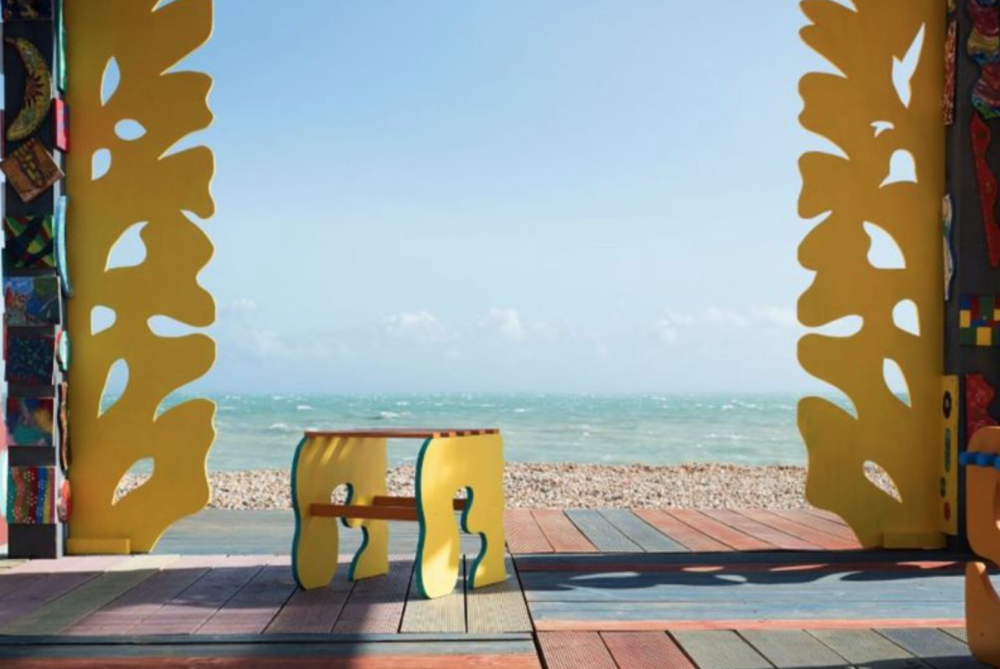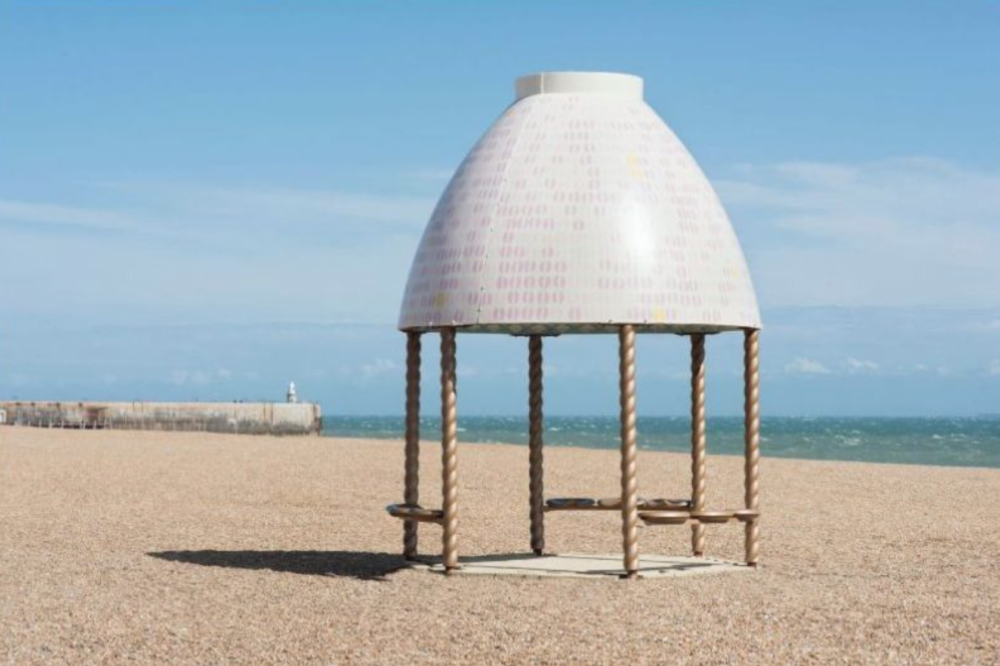FOLKESTONE TRIENNIAL 2020
The fifth edition of Folkestone Triennial, will run from 5 September – 8 November 2020 and presents around 20 newly commissioned artworks by internationally acclaimed artists. Curated for the third time by Lewis Biggs, the 2020 Triennial, entitled The Plot, invites visitors to consider urban myths and their relation to verifiable realities: the gap between the story and the actuality.
The 2020 Triennial uses three historic Folkestone narratives as a point of departure: St Eanswythe’s Watercourse; the physician William Harvey’s discovery of the circulation of the blood; and Folkestone’s industrial road ‘The Milky Way’ (see Notes to Editors). Referring to passages of movement – the movement of water, blood and goods – the exhibition will present artworks in public spaces across the town, along the various routes associated with these stories. By borrowing from, or lending to, existing narratives, the exhibition, though set in Folkestone, raises questions around the universal need to distinguish reality from myth.
The title The Plot suggests multiple meanings. Conceptually, a ‘plot’ can be a narrative or conspiracy; from a material point of view, it can also mean a plot of land, or to plot a course or graph – things that are mathematically verifiable. Observing the gap between personally verified experience and what is otherwise told or narrated, the Triennial urges viewers to consider the voids left behind by ‘fake news’ and ‘post-truths’. Lewis Biggs expands:
‘The gap between narrative and reality, promise and execution, will often attract our attention (whether amazement, hilarity, criticism or anger). But it’s this same gap that enables art to change people, and so also change the world. It’s the promise of the symbolic world that brings people together and motivates us to act. The artist’s imagination enables us to look at the material world, to imagine how it could be, and realise that it does not have to be the way it is. Great art can lead us to work together to change our surroundings.’
Following the 2020 Triennial, a selection of the artworks will remain on site in the town as part of Folkestone Artworks, the UK’s largest ongoing urban outdoor exhibition of contemporary art.

Sol Calero, Casa Anacaona, 2017, part of Folkestone Artworks, commissioned by Creative Folkestone. Image by Thierry Bal
The Three Historical Narratives
St Eanswythe’s Watercourse. St. Eanswythe was a seventh century princess of the Kentish royal family who took up residence in Folkestone. The watercourse named after her was a straightforward (if ambitious) piece of engineering. It is a verifiable fact that the watercourse ran along the present Guildhall Street and supplied The Bayle with fresh water for between seven and eleven centuries, but ongoing archaeological and historical research have so far failed to establish with certainty the date of, or responsibility for, its construction. We do not know when it was first linked to St Eanswythe or the origin of the story of the miraculous action that earned the princess her sainthood for ‘making water run uphill’. However, the Kentish princess became the patron saint of the town, and her life is still celebrated every 12 September. But ask any inhabitant of Folkestone today where Eanswythe’s miraculous watercourse actually ran and they will struggle to tell you.
William Harvey (1 April 1578 – 3 June 1657) was born in Folkestone, where his father was Mayor in 1600. There he drank and washed in the water supplied by St Eanswythe’s watercourse, which passed very near the house where he was born (between the present-day Rendezvous Street and Old High Street). He was the first known physician to describe completely, and in detail, the systemic circulation and properties of the blood – in his book De Motu Cordis, 1628. He became Royal Physician to James I and Charles I. Harvey’s statue stands overlooking the sea at the junction of Castle Hill Avenue and The Leas.

Lubaina Himid, Jelly Mould Pavilion, 2017, part of Folkestone Artworks, commissioned by Creative Folkestone. Image by Thierry Bal
The Milky Way was the informal name for Foord Road South. It can be taken as an image standing for the transience of Folkestone’s ‘industrial’ cycle. In the last quarter of the 19th Century, horse-drawn carts hauled coal from the Harbour to the Gasworks and returned down Foord Road South laden with chalk to be used as ballast by the ships. The road was stained black by coal dust and then white by chalk falling from the carts, making it look like the Milky Way. Foord Road climbs The Pent Valley alongside the lower reaches of the Pent River, which was the source of power for mills and the town’s industry, while the valley higher up was the first area to be developed for middle class housing in the mid-19th Century. Ultimately, the Pent river is the reason for Folkestone’s existence, the river and tidal inlet providing access through the cliffs for traders and smugglers, and safety for fishing boats.







